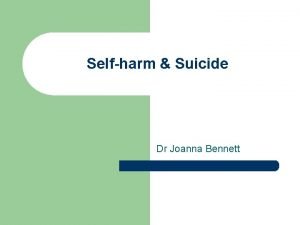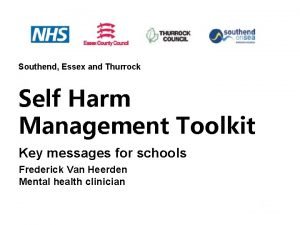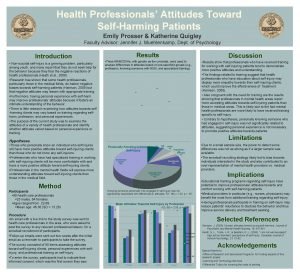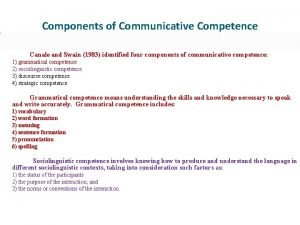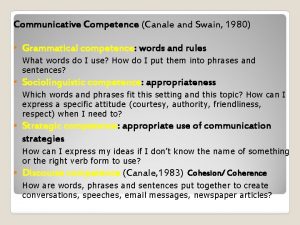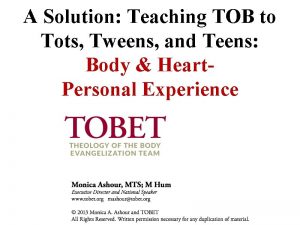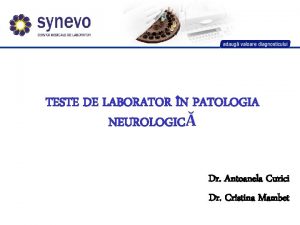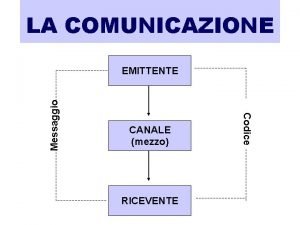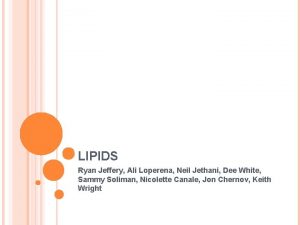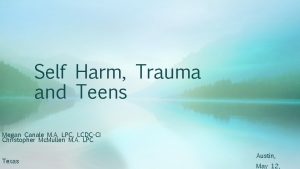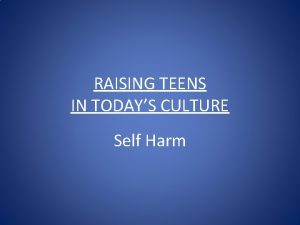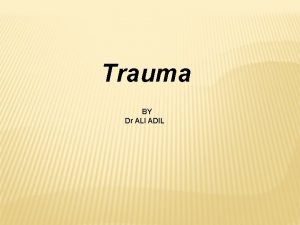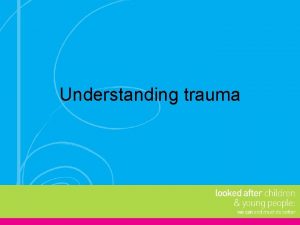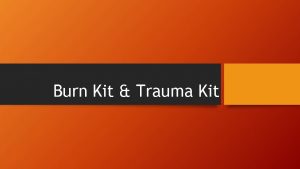Self Harm Trauma and Teens Megan Canale M


















- Slides: 18

Self Harm, Trauma and Teens Megan Canale M. A. LPC, LCDC-CI Christopher Mc. Mullen M. A. LPC Texas Austin, May 12,

What is Self-Harm? • Most commonly referred to as self harm, self mutilation, or self abuse • Harming oneself on purpose • Examples include but are not limited to: – – – – – Cutting ones’ skin Burning self Banging head Scratching oneself Drinking poisonous materials Inserting objects into body openings Hitting oneself Pulling out body hair (not to be confused with trichotillomania) Suffocation New ways being explored daily

Definition cont. . – Locations most common for cutting include upper arms, inner thighs, underneath the chest, upper chest, arms, and any area that is easily hidden • Unhealthy form of COPING • Sign of emotional distress • Generally is not life threatening, but absolutely can be if not treated appropriately • Addicting behavior that is very difficult to stop • Affects all genders • Affects all ages

Self Harm Myths and Misnomers Handout

Myths and Misnomers • It is a suicide attempt • It is for attention • Desire to fit in with peers • Must be hospitalized • Should be punished or experience consequences to deter behavior • Only female adolescents

VIDEO Demi Lovato Talks About Cutting Herself You. Tube

Most Common Comorbid Diagnoses • Borderline Personality Disorder • PTSD • Substance Use Disorders • IDD • Autism Spectrum Disorders • Eating Disorders (Anorexia Nervosa, Bulimia Nervosa) • Dissociative Identity Disorders • Major Depressive Disorders • This presentation will focus primarily on PTSD and Self Harm

Self Harm and Adolescents Facts and Stats • Approximately 2 million cases of self harm are reported each year • Nearly 1 in 5 adolescent females have reported at least one incident of self harm (2012, Sweet, Whitlock) • Nearly 1 in 7 adolescent males report self harm behaviors • 70% of teens who self harm have reported at least one suicide attempt separate from self harming behavior • 90% of adults who self injure, began in adolescence • Females comprise 60% of those who self injure • National Center for PTSD estimate that 13 -35% of adolescents have engaged in self harming behaviors at some point • Average of first self harm is 14 years old

Most Common “Causes” • To cope with overwhelming feelings and emotions • Experiencing major depression • Sense of control • Have experienced a traumatic experience (bullied, history of physical, verbal, psychological, sexual abuse, miscarriage, grief, major life transitions, witness to domestic violence, etc. ) and are unable to process event in healthy way • Experiencing conflicting cultural expectations • Low self esteem/self worth • Feelings of detachment from others or self • Lack support system • Close friends or family have encouraged this behavior and shown improvement in their mood or emotions • Punishment • Continued self harm usually indicates that this negative coping strategy has helped them in some way

Trauma and Self Harm Correlations • Studies show that those who have experienced trauma are more likely to engage in self harm • Difficult to “feel” due to reactions of numbness and shock and self harm can provide relief of these symptoms • Trauma can trigger desire to take control • Sexual abuse victims report need to “punish” their bodies, or mar themselves in order become “less desirable” • Disruptive attachment relationships directly effect the ability of the mind to “integrate experience and to adapt to future stressors” (Siegel, 1999).

Treatment Modalities – Initial contact: What to ask – Respond with calm concern, rather than with shock or emotional displays. One way to engage someone is to show what self-injury treatment veteran Barry Walsh identifies as “respectful curiosity”—asking simple questions that allow you to garner important information and provide an opening for sharing. – Examples of “respectfully curious” questions (Walsh, 2008) include: � – “Where on your body do you tend to injure yourself? ” � – “Do you find yourself in certain moods when you injure yourself? ” � – “Are there certain things that make you want to injure yourself? ”

Treatment Modalities cont… – Evaluation: To begin with, the client needs to be evaluated by an experienced mental health professional to find out what his/her reasons for hurting him/herself are and what emotional difficulties he/she’s experiencing. – Family Therapy: If there are things going on at home-fighting, job loss, a death-that could be the source of clients’ reported emotional troubles, family therapy is a good way to begin treatment. – Medication: Often if there is another disorder involved, a doctor will prescribe medication to treat that condition. The combination of medication and psychotherapy is very successful at treating kids who self-harm. – Psychotherapy – Known as talk therapy or psychological counseling, psychotherapy can help you: – – Identify and manage underlying issues that trigger self-injuring behavior Learn skills to better manage distress Learn how to regulate your emotions Learn how to boost your self-image

Treatment Modalities cont… -Several types of individual psychotherapy may be helpful, such as: – Cognitive behavioral therapy (CBT), which helps you identify unhealthy, negative beliefs and behaviors and replace them with healthy, positive ones – CARESS: Communicate Alternatively, Release Endorphins, Self Soothe. ( Ferentz, 2002). – Dialectical behavior therapy, a type of CBT that teaches behavioral skills to help you tolerate distress, manage or regulate your emotions, and improve your relationships with others – Psychodynamic psychotherapy, which focuses on identifying past experiences, hidden memories or interpersonal issues at the root of your emotional difficulties through self-examination, guided by a therapist – Mindfulness-based therapies, which help you live in the present, appropriately perceive thoughts and actions of those around you to reduce your anxiety and depression, and improve your general well-being. Meditation, yoga, qigong, tai chi, breath work, etc. – EMDR, Eye Movement Desensitization and Reprocessing to access both the left and right hemispheres of the brain to alleviate the distressing symptoms of PTSD

Working With Trauma • As with any therapeutic relationship; the following is vital in order to ensure a safe clinical environment: – – – Grounding techniques Development and installation of a “safe place” Resources for support Healthy coping skills Ability to stabilize SELF CARE – Check in with yourself – Take care of yourself – Refer out if need be

Case Study Example-Megan • *Alaina Brown – – – 16 year old female Victim of sexual abuse and physical abuse at hands of her father Significant conflict in the home with mom and step father Extensive history of psychiatric hospitalizations Previous diagnoses of PTSD, Bipolar DO, Oppositional Defiant DO, Conduct DO Experiences flashbacks from trauma, nightmares, and debilitating feelings of being “frozen” throughout the day Substance use of alcohol, marijuana and cigarettes Provided in home counseling services through Children's Trauma Initiative Program Utilized ARC CARESS techniques Progress and Setbacks

Please Share your experiences and background with Self Harm in Adolescents!

References • Ehmke, R. (n. d. ). Self-Injury and Self-Harm Help | Self-Mutilation and Cutting. Retrieved April 07, 2017, from https: //childmind. org/article/what-drives-selfinjury-and-how-to-treat-it/ • Ernhout, , C. , & Whitlock, J. (2014). Bringing up Self-Injury with Your Clients. The Fact Sheet Series. Retrieved on April 7, 2017 from http: //www. selfinjury. bctr. cornell. edu/perch/resources/bringing-up-self-injury-with -your-clients. pdf • Ferentz, L. (2015). Treating Self Destructive Behaviors in Trauma Survivors. New York: Routledge. • Gluck, S. (n. d. ). Self Injury, Self Harm Statistics and Facts - Self Injury - Abuse. Retrieved April 07, 2017, from http: //www. healthyplace. com/abuse/selfinjury/self-injury-self-harm-statistics-and-facts/ • Magaldi, K. (2015, June 25). Why Do People Self-Harm? It's More Complicated Than You Think. Retrieved April 07, 2017, from http: //www. medicaldaily. com/self-harm-rise-teens-and-needing-attention-hasnothing-do-it-339974 • Mayo Clinic Staff Print. (2015, December 09). Overview. Retrieved April 7, 2017, from (http: //www. mayoclinic. org/diseases-conditions/self-injury/home/ovc 20165425) • NAMI. (n. d). Retrieved April 07, 2017 from http: //www. nami. org/Learn. More/Mental-Health-Conditions/Related-Conditions/Selfharm#sthash. u. ZR 36 x. WN. dpuf

References • Peterson, J. , Freedenthal, S. , Sheldon, C. , & Andersenn, R. (2008, November). Nonsuicidal Self Injury in Adolescents. Retrieved April 7, 2017 from https: //www. ncbi. nlm. nih. gov/pmc/articles/PMC 2695720/ • PTSD: National Center for PTSD. (2007, January 01). Retrieved April 07, 2017, from https: //www. ptsd. va. gov/public/problems/self-harm. asp • Self-Harm Effects, Symptoms & Signs. (n. d. ) Retrieved April 7, 2017 from http: //www. deltamedcenter. com/psychiatric/self-harm/effects-symptomssigns • Self-Harm Treatment in CO. (n. d. ). Retrieved April 7, 2017, from https: //www. sandstonecare. com/co-occurring-disorder/self-harm/ • Self Injury (Cutting, Self-Harm or Self-Mutilation). (2016, August 17). Retrieved April 7, 2017 from http: //www. mentalhealthamerica. net/self-injury. • Siegel, D. (1999). The developing mind. New York: Guilford Press. • Walsh, B. (2008). Treating self injury: A practical guide. New York: Guilford. • Whitlock, Janis. (n. d. ) The Cutting Edge: Non-Suicidal Self-Injury in Adolescence. Retrieved April 7, 2017 from http: //www. selfinjury. bctr. cornell. edu/publications/2009_1. pdf
 Real self and ideal self example
Real self and ideal self example Joanna self harm
Joanna self harm Self harm toolkit essex
Self harm toolkit essex Emily self harm
Emily self harm Canale and swain communicative competence
Canale and swain communicative competence Canale at swain
Canale at swain Tots tweens and teens
Tots tweens and teens Megan and ron ate too much
Megan and ron ate too much Turistul
Turistul Acid valproic synevo
Acid valproic synevo Raze medulare
Raze medulare Parete addominale anterolaterale
Parete addominale anterolaterale Emittente ricevente canale codice
Emittente ricevente canale codice La traviata tesina terza media
La traviata tesina terza media Marketing direct definitie
Marketing direct definitie Nicolette canale
Nicolette canale Simbol mosfet kanal p
Simbol mosfet kanal p Canale giovanni
Canale giovanni Organisme fotosintetizatoare
Organisme fotosintetizatoare

